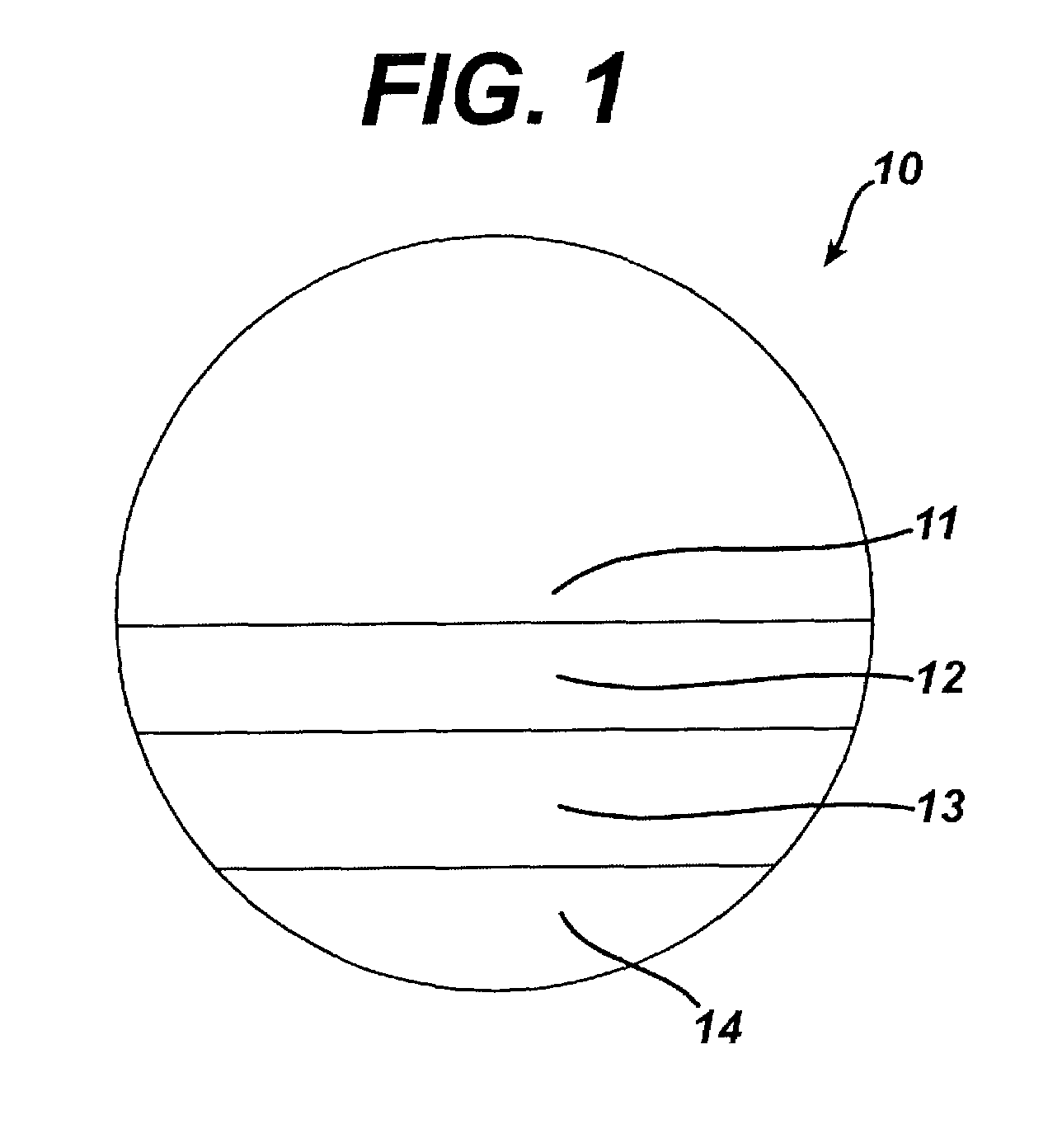Four zone multifocal lenses
a multi-focal lens and four-zone technology, applied in the field of multi-focal lenses, can solve the problems of inability to provide the refractive power for clear visualization of the stairs in the zone, the inferior-most portion of the lens contains the add power, or near vision correction power, and the placement is problemati
- Summary
- Abstract
- Description
- Claims
- Application Information
AI Technical Summary
Problems solved by technology
Method used
Image
Examples
example 1
[0020]A lens is provided that has a front, progressive surface. The front surface add power is 2.00 diopters and the front surface base curve is 4.50 diopters and a channel length of 15 mm. The length of the near vision zone along the principal meridian is 3 mm. The back surface of the lens has a base curve of 4.50 diopters and second intermediate zone that is 4 mm in length and has a minimum power of 0.50 diopters. The second intermediate zone begins approximately 18 mm below the lens' fitting point and ends approximately 21 mm below the fitting point.
example 2
[0021]A lens is provided that has a front progressive surface that has four zones of refractive power. The front surface base curve is 6.50 diopters with an add power of 2.00 diopters at the center of the near vision zone. The second intermediate vision zone, on the lens' front surface, has a length of approximately 6 mm a reduction of spherical power of 0.55 diopters. The back surface of the lens is a four-zone progressive surface with a base curve of 2.50 diopters, an add power of 1.00 diopters and a second intermediate zone that is 5 mm in length and a reduction of spherical power of 0.50 diopters.
example 3
[0022]A lens is provided that has a front progressive surface that has four zones of refractive power. The front surface base curve is 5.00 diopters with an add power of 2.00 diopters at the center of the near vision zone. The channel length is 16 mm, and the length of the near vision zone is 3 mm. A second intermediate vision Zone begins at a point approximately 19 mm below the fitting point and ends approximately 26 mm below that point. The back surface of the lens is a three-zone progressive surface with a base curve of 5.00 diopters, an add power of 1.00 diopters.
PUM
 Login to View More
Login to View More Abstract
Description
Claims
Application Information
 Login to View More
Login to View More - R&D
- Intellectual Property
- Life Sciences
- Materials
- Tech Scout
- Unparalleled Data Quality
- Higher Quality Content
- 60% Fewer Hallucinations
Browse by: Latest US Patents, China's latest patents, Technical Efficacy Thesaurus, Application Domain, Technology Topic, Popular Technical Reports.
© 2025 PatSnap. All rights reserved.Legal|Privacy policy|Modern Slavery Act Transparency Statement|Sitemap|About US| Contact US: help@patsnap.com


